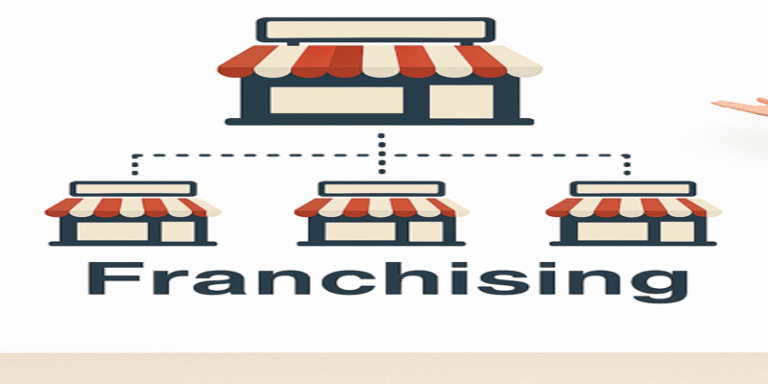Franchising has emerged as one of the most popular business models of the 21st century, playing a vital role in expanding enterprises across local and international markets. From fast food chains like McDonald’s and Subway to service providers such as The UPS Store or Anytime Fitness, franchising allows businesses to scale rapidly while maintaining brand consistency and operational control.
At its core, franchising is a business relationship where the franchisor (the original business owner) grants the franchisee the rights to operate under the brand name and business model. In exchange, the franchisee pays a franchise fee and ongoing royalties, often receiving training, support, and access to proprietary systems (Baron & Shane, 2008).
1.0 Understanding the Franchising Model
There are several types of franchising, but the most prevalent is business format franchising. This involves not just the licensing of a product or service but the transfer of an entire business system, including marketing strategies, training, and daily operational guidelines (Seid, 2006).
For example, McDonald’s operates under a business format franchise model, ensuring that customers receive the same product experience whether they are in Manchester or Mumbai. This consistency is part of the reason franchising has become an attractive method of growth for global enterprises.
2.0 Advantages of Franchising
The benefits of franchising are numerous, both for franchisors and franchisees.
For Franchisors:
- Rapid Expansion with Reduced Capital Investment: Since franchisees invest their own capital, franchisors can grow their networks without significant financial outlay (Ramya, 2014).
- Motivated Operators: Franchisees have a vested interest in the success of their business, often leading to better management and customer service.
- Brand Awareness and Market Penetration: Entering new geographic markets becomes easier with local franchisees who understand the regional landscape (Salar & Salar, 2014).
For Franchisees:
- Lower Risk of Failure: They benefit from an established brand and tested business model, significantly reducing the risks compared to starting an independent venture (Gillis & Castrogiovanni, 2012).
- Ongoing Support: Franchisors provide continuous assistance in training, marketing, and operations.
- Easier Access to Financing: Financial institutions are more willing to lend to franchisees of well-known brands due to lower associated risks.
3.0 Challenges and Limitations
Despite its many benefits, franchising is not without drawbacks.
For Franchisors:
- Loss of Control: Managing a widespread network of franchisees can be complex, especially when maintaining quality standards.
- Legal and Regulatory Requirements: Many countries impose strict rules on franchising, which can vary significantly and require legal oversight (Makhrenskii, 2021).
For Franchisees:
- Limited Autonomy: Franchisees must operate within the guidelines set by the franchisor, limiting innovation and flexibility.
- Ongoing Fees: Franchisees often pay royalty fees and contribute to marketing funds, which can impact profitability.
- Reputation Risks: Poor performance by other franchisees can damage the entire brand’s image.
4.0 Real-World Examples
Success Story – Subway
Subway, with more than 37,000 locations globally, grew rapidly due to its adaptable franchise model and low entry barriers. Franchisees benefit from a globally recognised brand, operational training, and a standardised supply chain.
Cautionary Tale – Quiznos
Quiznos, another sandwich chain, experienced rapid growth in the early 2000s but eventually faced multiple lawsuits from franchisees over high supply costs and lack of support. The brand failed to maintain relationships with its franchisees, leading to store closures and brand decline (Soliman, 2022).
These examples underscore the importance of strong franchisor-franchisee relationships and ethical management practices.
5.0 Legal Considerations
Franchising operates under legal contracts known as franchise agreements, which outline the roles and responsibilities of both parties. These agreements cover elements such as:
- Territorial rights
- Fee structures
- Intellectual property use
- Performance standards
In the UK, although there is no specific franchising law, contracts are enforced under general commercial law, and guidance is provided by bodies like the British Franchise Association (BFA) (British Franchise Association, 2023).
6.0 Economic and Cultural Impact
Franchising plays a significant role in job creation, entrepreneurship, and local economic development. In the UK alone, the franchise industry contributes over £17 billion annually and employs more than 700,000 people (BFA/NatWest Survey, 2022).
Furthermore, franchising encourages cross-cultural business practices. For instance, brands like Domino’s Pizza have successfully adapted their product offerings to suit local tastes in India and Japan, demonstrating the flexibility of the model.
7.0 Franchising in the Digital Age
Technology is reshaping how franchises operate. Digital tools now support inventory management, online ordering, customer relationship management (CRM), and data analytics. Franchisors use these systems to monitor performance across outlets and ensure consistency.
Digital marketing also plays a crucial role in building brand identity and attracting customers. Social media campaigns, app-based loyalty programmes, and online reviews significantly influence franchise success in today’s market.
Franchising offers a strategic pathway for business growth, combining the strength of a centralised brand with the entrepreneurial spirit of individual operators. While the model presents various advantages—including lower risk, established branding, and support—it also comes with limitations, particularly regarding autonomy and control.
For those considering franchising, whether as a franchisor or franchisee, understanding the legal, financial, and operational aspects is crucial. Like any business model, success depends on careful planning, open communication, and a commitment to quality and integrity.
As global markets evolve and digital innovations reshape consumer expectations, franchising will remain a dynamic and influential force in the business landscape.
References
Baron, R.A. & Shane, S.A., 2008. Entrepreneurship: A Process Perspective. 2nd ed. Mason: South-Western College Pub.
British Franchise Association, 2023. What is Franchising? [online] Available at: https://www.thebfa.org [Accessed 13 Aug. 2025].
Gillis, W. and Castrogiovanni, G.J., 2012. The franchising business model: An entrepreneurial growth alternative. International Entrepreneurship and Management Journal, 8(1), pp.75-98.
Makhrenskii, B., 2021. Franchise as a Business Model: A Comparative Analysis Between Russia and USA. [pdf] Karelia University of Applied Sciences. Available at: https://www.theseus.fi/handle/10024/509208 [Accessed 13 Aug. 2025].
Ramya, N., 2014. Retailing business model – franchising. Paripex Indian Journal of Research, 3(9), pp.51–54.
Salar, M. and Salar, O., 2014. Determining pros and cons of franchising by using SWOT analysis. Procedia – Social and Behavioral Sciences, 150, pp.105–113.
Seid, M., 2006. Franchise Management for Dummies. Hoboken: Wiley.
Soliman, M.E., 2022. Why franchising is a smart business model: A comprehensive review. ScienceOpen Preprints. Available at: https://www.scienceopen.com [Accessed 13 Aug. 2025].









